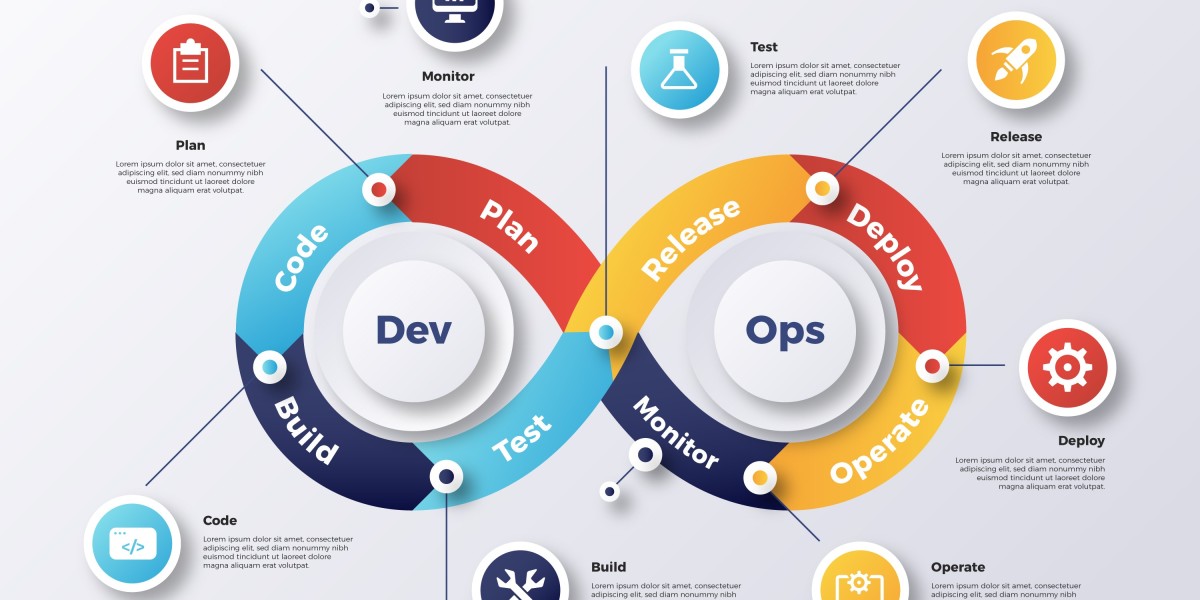In today’s fast-paced digital environment, staying ahead of the curve requires collaboration, agility, and efficiency. Whether you're running a startup or an enterprise-level business, productivity hinges on more than just individual talent—your team’s processes need to flow seamlessly. That’s where DevOps as a Service (DaaS) steps in, providing a powerful framework that connects development and operations, boosts productivity and helps deliver software faster with fewer errors.
This article explores how DevOps as a Service transforms productivity, what advantages it offers, and the steps to implement it within your business. Whether you’re new to the DevOps world or looking to refine your processes, keep reading to learn how DaaS can take your team’s efficiency to the next level.
1. What is DevOps as a Service?
DevOps as a Service (DaaS) is an outsourced solution that integrates development (Dev) and operations (Ops) teams using automated tools, cloud-based platforms, and best practices. With DaaS, companies leverage third-party services to streamline processes like software deployment, monitoring, testing, and continuous integration/continuous delivery (CI/CD).
DaaS eliminates the need for internal teams to build and maintain DevOps tools from scratch, providing businesses with expert management and automation to accelerate development lifecycles and improve software quality.
2. Why DevOps Matters for Productivity
Traditional software development often results in siloed departments, with developers, testers, and operations working independently. This lack of collaboration can lead to miscommunication, delays, and increased workloads. DevOps focuses on unifying these teams to work towards a shared goal—delivering high-quality software quickly and efficiently.
By introducing automation and breaking down these silos, DevOps eliminates bottlenecks, helping teams focus on what matters: creating value for customers.
3. How DevOps as a Service Works
The backbone of DevOps as a Service lies in tools and automation. A typical DaaS provider offers:
- Cloud-based infrastructure for easy scaling and monitoring
- CI/CD pipelines to automate code testing and delivery
- Monitoring tools to track system performance in real-time
- Security solutions integrated into the development lifecycle (DevSecOps)
These components are often delivered via Software as a Service (SaaS) platforms, ensuring businesses can access tools and insights from any location without the hassle of infrastructure management.
4. The Key Benefits of DevOps as a Service
1. Enhanced Collaboration
DaaS promotes a collaborative culture by aligning cross-functional teams through shared tools and processes. With clearer communication channels, tasks get completed faster and more accurately.
2. Faster Time-to-Market
By automating key steps like testing, deployment, and monitoring, DaaS reduces the time it takes to bring a product to market. Faster releases keep customers engaged and give your business a competitive edge.
3. Cost Savings
DaaS eliminates the need for costly in-house DevOps specialists. The service model offers predictable pricing and reduces overhead costs related to software maintenance and upgrades.
4. Improved Software Quality
With automated testing integrated into the CI/CD pipeline, teams can identify and resolve issues early in development, leading to fewer bugs and more stable software releases.
5. Increased Security
Modern DaaS providers integrate security practices into DevOps pipelines (DevSecOps). Continuous monitoring ensures vulnerabilities are identified and addressed promptly before they impact end-users.
5. Key Tools Used in DevOps as a Service
A variety of tools are used to enable smooth DevOps processes. Some of the most popular ones include:
- Jenkins: For continuous integration and automation of builds
- Docker: Containerization platform for consistent environments
- Kubernetes: Orchestration tool for managing containers at scale
- Terraform: Infrastructure as Code (IaC) tool for automated provisioning
- Prometheus and Grafana: Monitoring and visualization tools
- GitHub Actions: CI/CD pipelines integrated into code repositories
By using a combination of these tools, DevOps as a Service ensures your software development process is streamlined and automated.
6. How DevOps as a Service Improves Employee Productivity
1. Elimination of Repetitive Tasks
Automating routine tasks like code testing, deployment, and performance monitoring allows developers to focus on more valuable work, such as feature development and innovation.
2. Faster Feedback Loops
With DaaS, teams can receive real-time feedback through automated testing, allowing them to address issues quickly. This eliminates wasted time waiting for feedback from other departments.
3. Reduced Downtime and Incidents
DaaS ensures proactive monitoring of applications, reducing downtime and preventing unexpected system failures. Fewer incidents mean less stress for operations teams and uninterrupted productivity.
7. The Role of DevSecOps in Productivity
Security breaches can slow down development timelines and result in expensive fixes. DevSecOps, a subset of DevOps, integrates security practices throughout the development lifecycle, ensuring your team delivers secure software without compromising speed. DevOps Consulting Services & Solutions
By embedding security into CI/CD pipelines, DevSecOps allows teams to detect vulnerabilities early and release software with confidence.
8. When Should You Implement DevOps as a Service?
While any business can benefit from DaaS, it’s particularly valuable for:
- Startups that need to deploy software quickly without building internal DevOps teams
- Enterprises looking to optimize legacy processes and automate workflows
- Remote teams that rely heavily on cloud infrastructure and SaaS solutions
If your team is struggling with manual processes, slow release cycles, or poor communication, it’s time to consider DevOps as a Service.
9. Steps to Get Started with DevOps as a Service
- Evaluate Your Needs: Identify bottlenecks and areas where DevOps can improve efficiency.
- Choose a Provider: Select a reliable DaaS provider with experience in your industry.
- Set Clear Goals: Define key metrics such as deployment frequency, downtime reduction, or faster feedback cycles.
- Train Your Team: Ensure your team understands the new tools and processes.
- Monitor and Optimize: Regularly review your DevOps performance and optimize workflows as needed.
10. Common Challenges of DevOps as a Service
While DaaS offers numerous benefits, some challenges can arise, such as:
- Resistance to Change: Teams may need time to adapt to new tools and processes.
- Integration Issues: It’s essential to ensure the DaaS tools integrate smoothly with existing systems.
- Ongoing Maintenance: Continuous optimization is required to keep workflows efficient.
Conclusion: Transform Your Team's Productivity with DevOps as a Service
DevOps as a Service is not just a trend—it’s a game changer for businesses looking to improve efficiency, collaboration, and software quality. By automating key processes, eliminating silos, and integrating security practices, DaaS empowers teams to work smarter, not harder.
Whether you're a startup or a large enterprise, embracing DevOps as a Service can unlock new levels of productivity, giving you the tools and agility to stay ahead of the competition. With the right DaaS provider, your team can focus on innovation and deliver exceptional products faster and more securely. Now is the time to leverage the power of DevOps and take your productivity to the next level.







